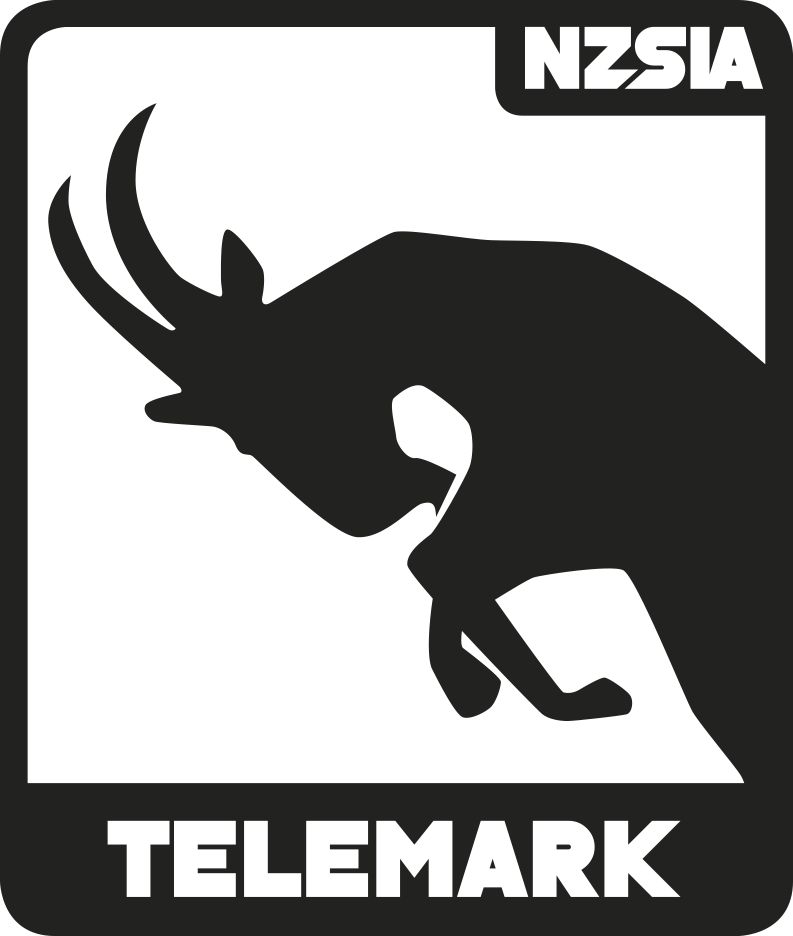Situational Telemark section provides key technical focuses for skiing in different conditions and terrain. These skills are not intended to be used in isolation but should be considered alongside good decision-making, experience, and sound technical fundamentals. Each environment presents unique demands that may require different levels of activity, movement, and tactics
Bumps, Crud and Steeps

 Technical Know-how
Technical Know-how
What’s New
Skiing in bumps, crud, and steep terrain demands quick adjustments, stable platforms, and fluid movements. This is where steering precision, foot to foot balance and control, and an adaptable stance come together to manage technical challenges.
Performance Tips
Lead Change – Quick and Compact
- In tight or demanding terrain, lead changes should be quick and compact. Maintain a rhythmic tempo while avoiding excessive flexion. A taller stance often provides more agility.
Lead Change – Versatility
- Adapt your lead change to suit the snow and terrain. In inconsistent snow or bumps, lead changes may be forward, simultaneous, slightly delayed, or even airborne. Remain fluid and responsive.
Lead Change – Short Turns
- Maintain continuous, fast lead changes in short radius turns. Support this with a consistent rhythm of flexion-extension and steering movements from the legs.
Lead Change – Back Pedal Action
- Use a quick extension of the legs with a slight back pedal movement to lift the skis above challenging snow. This prepares the skis for the next turn and keeps them responsive.
Foot to Foot Balance for Smooth Transition
- Keep pressure balanced as you move through the transition phase. Maintaining equal support from both skis ensures options for adjusting to terrain features and provides a reliable platform.
Active stance and Balance – Core Engagement
- Initiate movements from the core. Maintain visual focus downhill and allow your lower body to adapt underneath a quiet and stable upper body.
Balance – Feet and Legs
- Keep the inside hip forward to facilitate clean edge engagement and release. Strong ski-to-ski balance through the legs supports stability in complex terrain.
Skills
Edging – Low Angle Adaptation
- In bumps or broken snow, lower edge angles combined with a wider stance promote effective steering and pivoting. Use the shapes and contours of the terrain to help guide the turn.
Active stance– Centre of Gravity
- Stay over the middle of your skis by keeping your hips and centre of gravity aligned. Avoid falling behind the skis, especially on steeper slopes or variable snow.
Steering – Stable Upper Body
- Steer with the legs beneath a stable torso. Face your upper body down the fall line. A well-timed blocking pole plant helps keep the upper body quiet while the legs continue steering.
Steering – Inside Ski Engagement
- Actively steer both skis, especially the inside one, when navigating uneven terrain. Ensuring the inside ski tracks cleanly helps maintain parallel form and platform stability.
Steering – Leg-driven
- Guide the skis with deliberate steering from the legs. Keep edge change moments clean and quiet, minimizing unnecessary movement or upper body interference.


